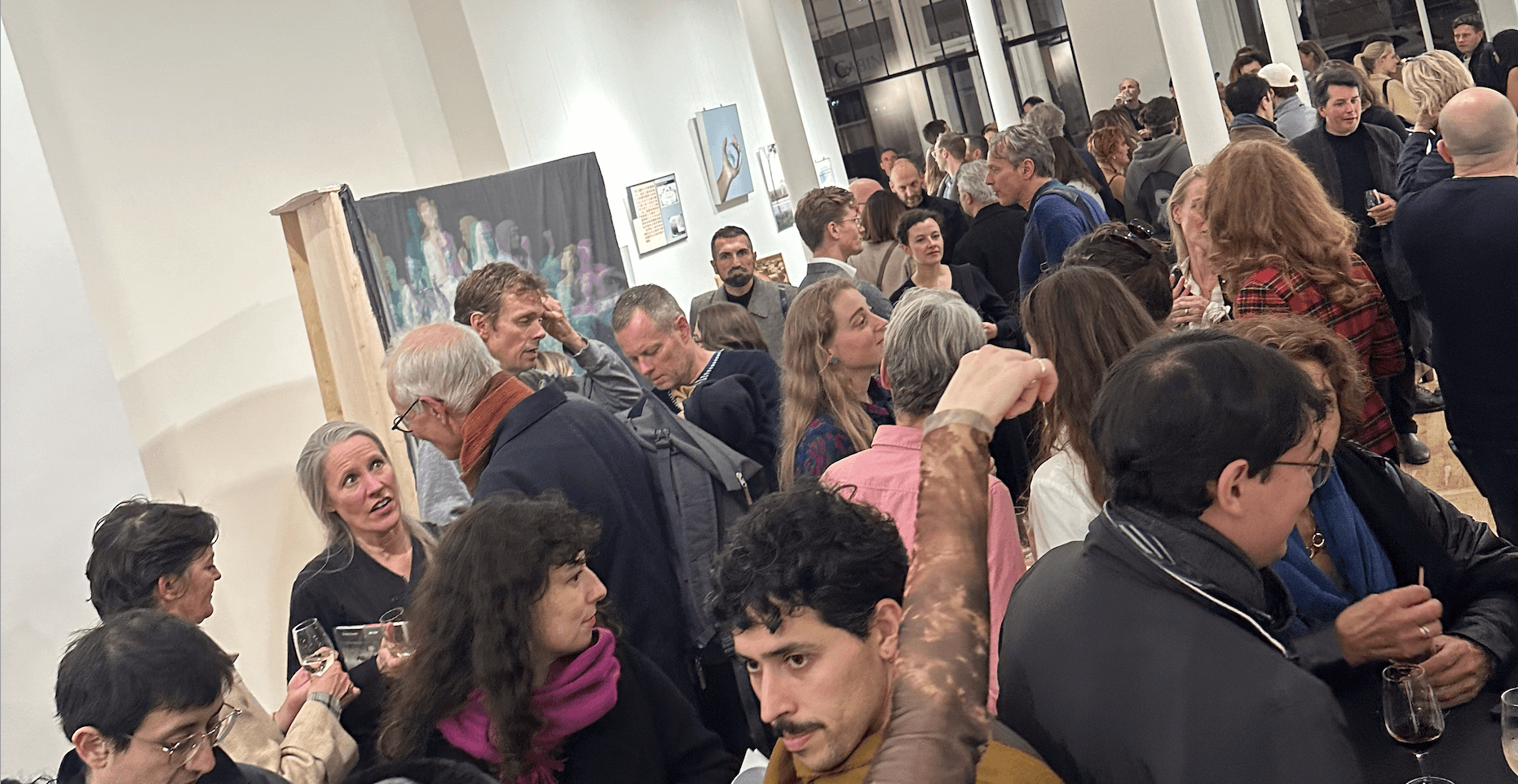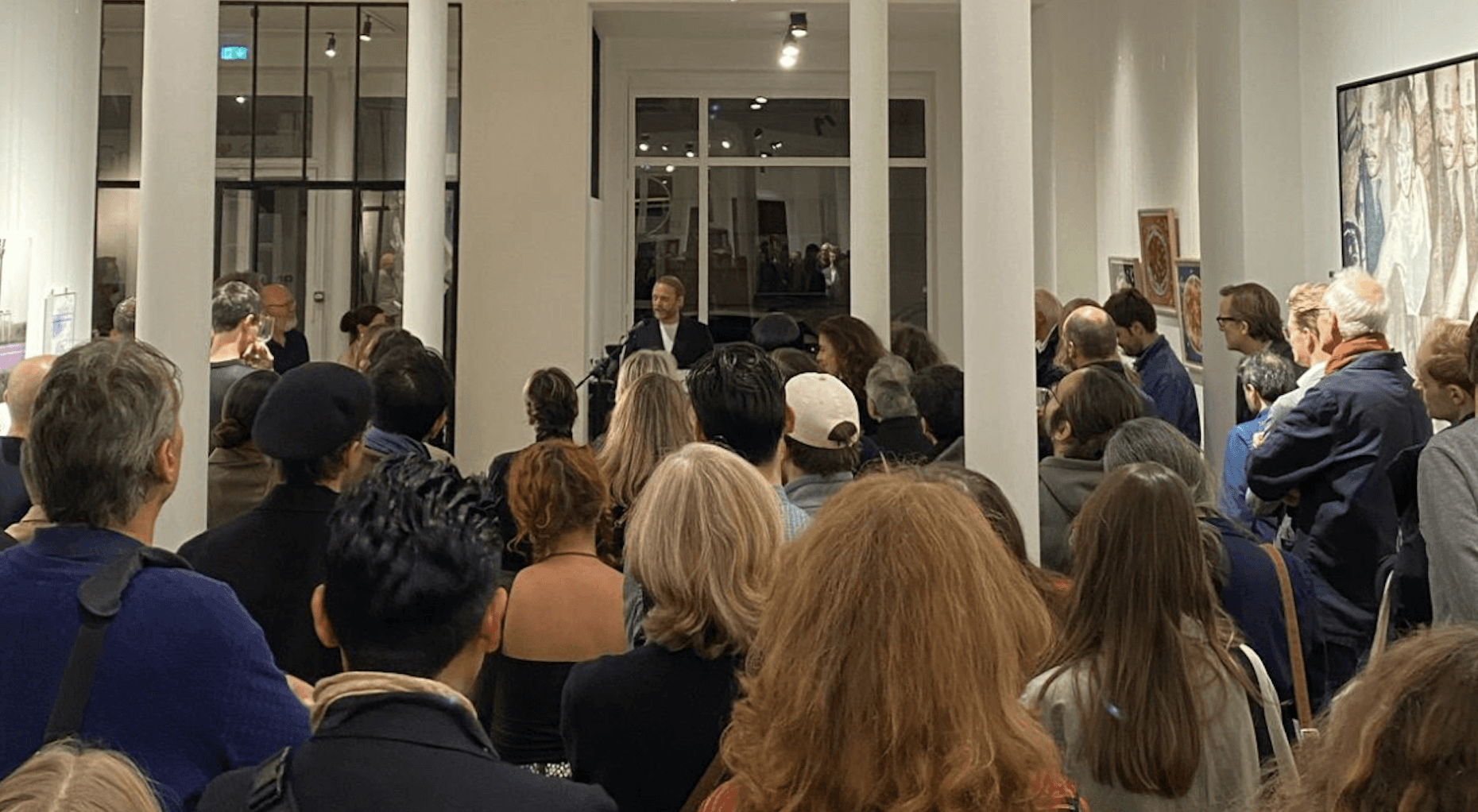
NOUVELLE FRONTIERE
EXHIBITION
NOVEMBER 2024 - ATELIER NEERLANDAIS, PARIS
CURATED BY RODERICK VAN DER LEE, CLAARTJE VAN DIJK & KATY HUNDERTMARK
The medium of photography has been subject to constant transformation, expansion, abstraction and fermentation. Originally coined, and later disregarded, as a document of reality, the search for new multi-media forms has shaped the development of the image over the past twenty years. Artists have created new ways of translating images into space, and by doing so introduce subjectivity and materiality as an agent to expand the documentary scope of the image.
With each technological change it has been made possible to reach further extremes of the visual spectrum, creating new understandings of what an image can be – memory, object, emotion, data, sound, flesh. The image is not bound to a sheet of paper anymore but can be found and integrated in the surfaces around us.
Both Foam and Unbound share a deep and ongoing interest in the expanded field of the medium and have joined forces to bring together a group of Netherlands based artist that explore this territory through their artistic practice. Some claim that photography is dead, but we like to think that it is very much alive and kicking – maybe now more than ever.
The exhibition Nouvelles Frontières at Atelier Néerlandais shows how photography can transcend traditional two-dimensional boundaries to reshape and reframe our understanding of reality. This unique collaboration between Foam and Unbound features experimental works from Netherlands based artists like Stijn Elshuis, Laurence Aëgerter, Jackie Mulder, Kevin Osepa, Jerrold Saija, Benjamin Li, and Maryam Touzani.
Each artist questions and reinterprets the lens through which we are used to viewing history, culture, and personal narratives. The works on display invite us to engage, relate and be confronted with their images in new ways that go beyond the visual.
Jerrold Saija
Sago
Jerrold Saija addresses ecology and the vegetation in the Moluccas, photography and art in general as a means to reconnect physically and emotionally with nature in the current climate era. For Atelier Néerlandais Jerrold Saija would present the work Sago (self-portrait). People say the same thing about the sago palm as they do about the people of Maluku: "Tough on the outside like the sago tree, but soft on the inside like papeda." This sculpture consists of a vertical acrylic rod leaning against the wall and resting on the ground. Within the rod is a groove containing 26 slide frames, each displaying an image of a part of the sago tree, printed on Duraclear. The whole piece is held together at the top by a metal fixture, on it rests a sago seed, symbolizing the seeds found at the top of the tree. The work is the same height as the artist. Papeda is the main food eaten in the Moluccas, made from the inner part of the sago palm.


Laurence Aëgerter
DOUBLE LIFE
Laurence Aëgeter is fascinated by transitions from one shape of reality to another: mirroring, visual illusions, appearing and disappearing.
The installation includes archival photographs of an exuberant New Year’s Eve party from the photo album of an 1960s army officer. These photographs were taken at the Casino Soesterberg, The Netherlands, near from the bunker which was built by the NATO during the Cold War in case of biological or chemical attack. The United States 32 Tactical Fighter Squadron have been using it for their trainings.
These Photographs are reproduced on woven fabrics, which were hung in place of the cots in the bunker. The light is switched on and off by a computer at a two minutes’ interval, giving the portraits, which were worked in phosphorescent thread, the air of death masks. Appearing and disappearing, smiling faces pop into view then fade from sight again. Presence and absence alternate.
Kevin Osepa
KLOF, VILLAGE OF SPIRITS
This project was conceived as part of Osepa’s residency at Buro Stedelijk of the Stedelijk Museum in Amsterdam.
On Curaçao is a place so feared that some people don’t even dare speak about it. A place of dark forces and a fraught history. This place is called the ‘Klof’, meaning ‘chasm’ or ‘gorge’. It is formed by two roads that run parallel for about three hundred metres. Both roads are lined with trees whose tops grow together to create a kind of tunnel – giving this spot its name. During the great slave revolt of 1795 (the most important rebellion leading up to the abolition of slavery), the Klof was the site of a bloody confrontation between the enslaved people and the Dutch colonists.
Although the associations with slavery have faded, it is still considered a place of evil and dark forces to this day. The people of Curaçao tell many stories about the sinister side of this spot. Statistically, a larger number of fatal car crashes also seem to happen here compared to the rest of the island. With his project, Kevin Osepa offers a new perspective on slavery in the past. This is not the perspective we find in Dutch history books, but the perspective of the stories that arose at this location.

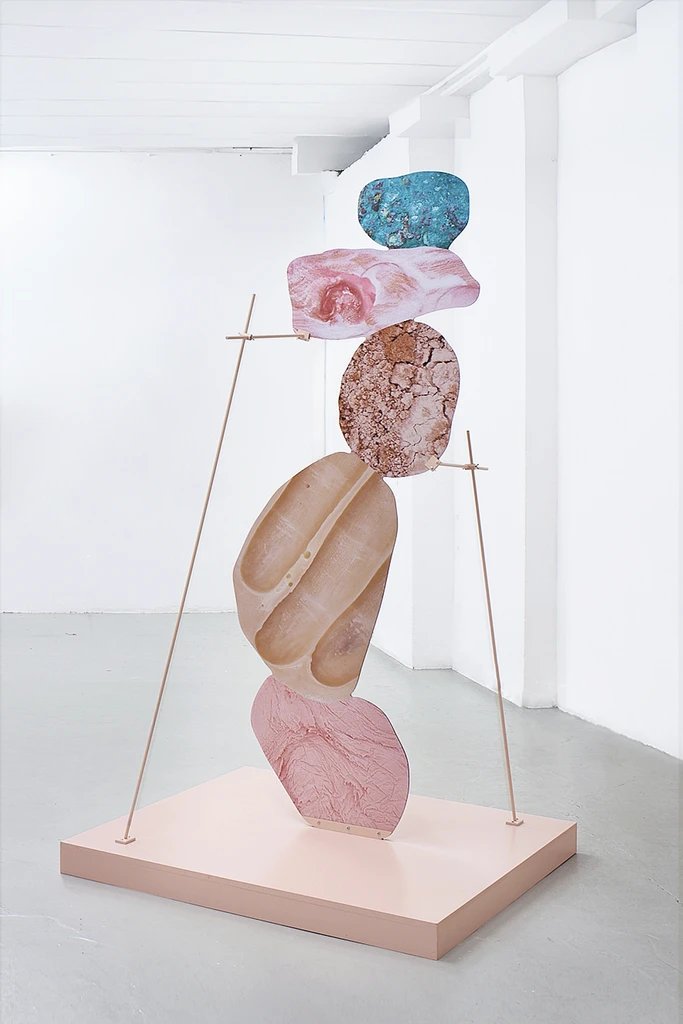
Rachel de Joode
SMALL HAPPY CLOUDS & STACKED SCULPTURE
Rachel de Joode is a Dutch-born, Berlin-based multimedia artist and educator with a distinguished international presence in museums, institutions, and galleries. Her work blends photography, sculpture, and painting, embodying the digital era’s complex connection to the material world. She mixes these mediums while bouncing between the physical and the virtual, exploring the relationship between the three dimensional object and it’s two dimensional representation.
Stijn Elshuis
IN THE ABSENCE OF TIME
Stijn Elshuis is a multimedia artist working predominantly with sculpture and photography that explores the ways in which we deal with History. His works are experimental arrangements that draw attention to the difficulties posed by the concept of history, with the aim of broadening our view of the times in which we live. To this end, he examines history, anthropology, philosophy and images found in archives, the media and in the public space and distils them into assemblages reflecting on history and the socio-political discourse.
In his work, he wonders what role nature will play and what changes can, and will, take place within nature and what forms this nature might take on. Nature seems to be opposite of technology, the rapidly changing technology versus the slowly evolving nature. Nature that plays an important role in our shared history through the great stories and fairy tales, through our dependence and our struggle to control it.
‘In the Absence of Time’ plays with the notion of the impossibility of permanence in the face of the eternal forces of time and nature. While the classical sculptural pieces allude to some sense of endurance, the blurry photographic documentation evokes an uneasy sense of inability to retain their essence sharply. On top of that, quite literally and figuratively, the fungi eat away at the image even further, reminding us that nothing can remain and in the long run, everything is transient.
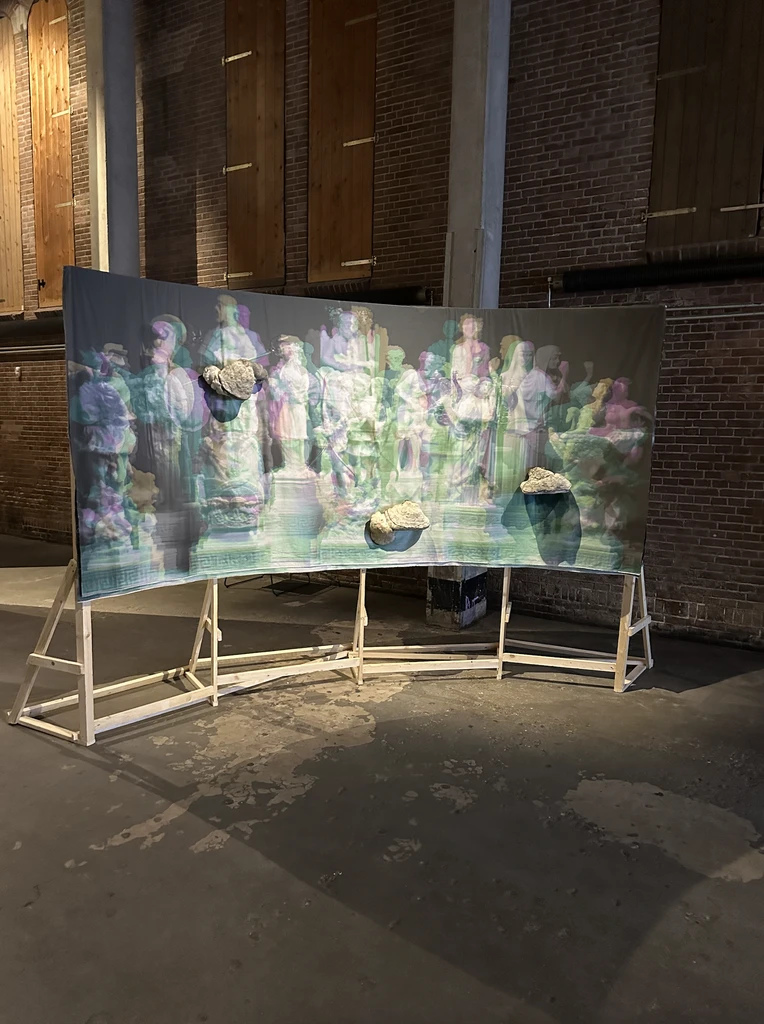
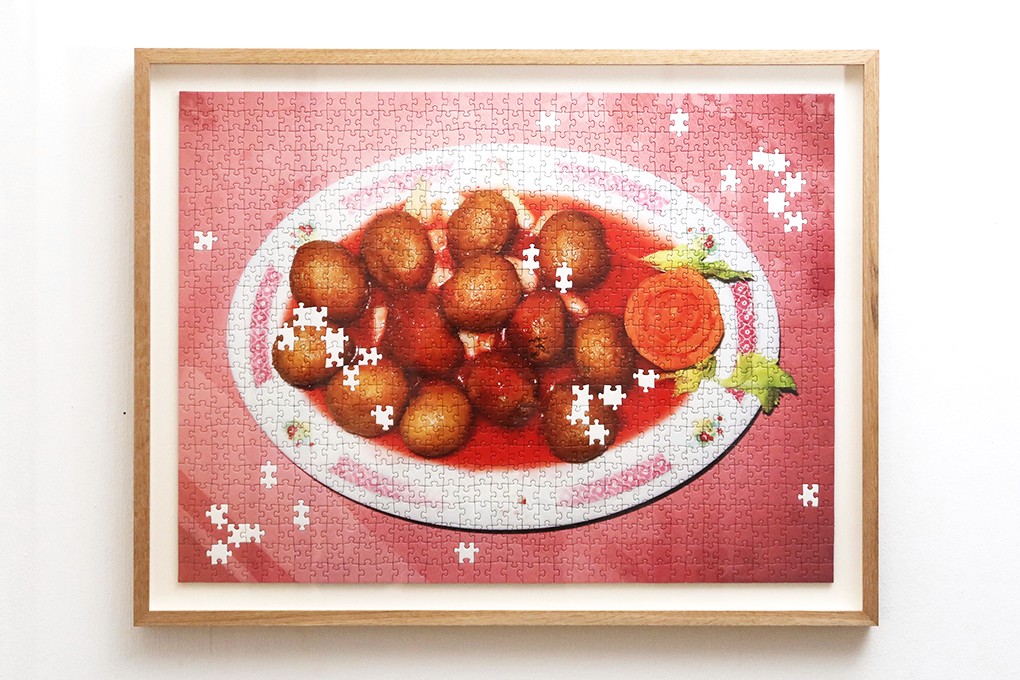
Benjamin Li
THE PUZZLE COLLECTION
Benjamin Li’s practice explores identity and belonging through the lens of food. Over the past decade, he has visited more than 1,000 Chinese- Indisch restaurants across the Netherlands, documenting his journey with photographs, menus, and memories. As the son of Chinese restaurant owners, his work reflects both personal heritage and broader themes of Dutch cuisine, shaped by colonial history and cultural fusion. For Atelier Néerlandais, we would like to include a selection of The Puzzle Collection. Li creates puzzles of traditional Chinese-Indisch dishes and intentionally replaces puzzle pieces with blank ones, matching his age at the time. With each year, he plans to add more blank pieces, symbolizing the passage of time and the potential fading of cultural traditions.
MAryam Touzani
LACK OF INFORMATION IS MY FAMILY HISTORY
An ongoing exploration of the artist's search for her heritage. With limited knowledge about her family history, MAryam Touzani embarked on a journey to trace her Moroccan ancestry and multicultural upbringing. Using her teeth—representing unique genetic traits—as a starting point, she photographs and gathers various pieces of evidence, including dental X-rays, passport images, her father’s death certificate, and colonial maps that leave out her ancestors' region. In her quest for answers, which are often elusive, photography becomes a poetic tool for Touzani, helping her reconstruct her past and envision her future.

